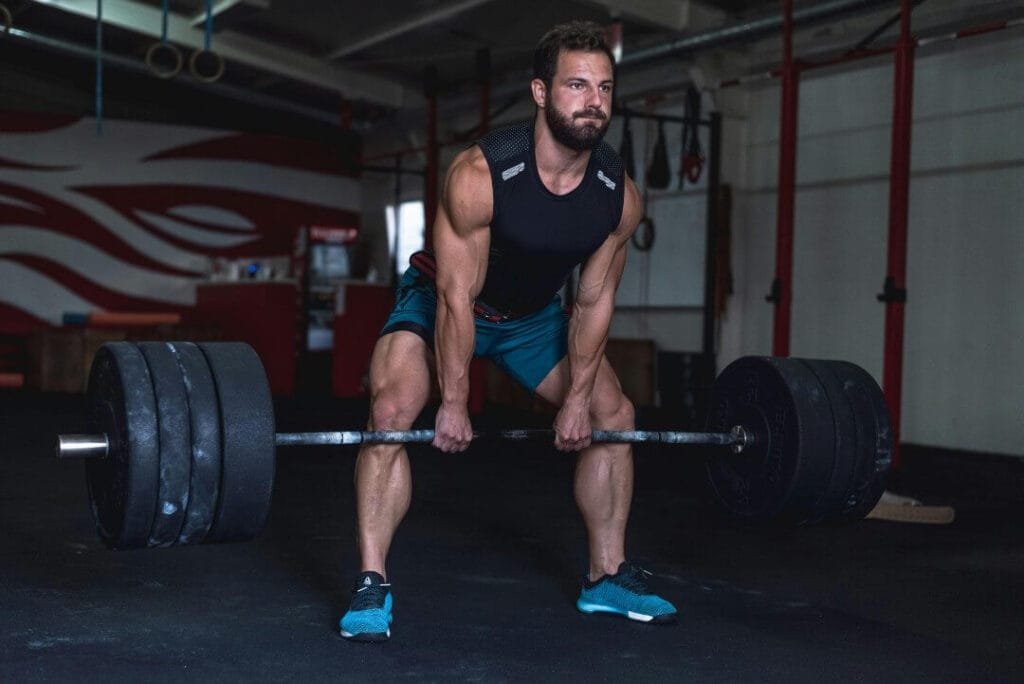What should you do first: cardio or strength training?
This is an endless “chicken or egg” discussion in the fitness world, and beginners are usually confused about it when they are just starting their fitness journey. To be sure you’re doing your workout in the proper way, you should find a professional personal trainer for guidance.
Also, it doesn’t hurt to educate yourself before heading to the gym. Read our article and find out if it is better to do cardio before or after weights.
Why are both cardio and strength training important?
Cardio and strength training are equally important for a balanced fitness routine. Cardio, an aerobic activity, keeps your heart and lungs healthy, boosts endurance, and helps burn calories efficiently.
On the other hand, strength training focuses on toning muscles, enhancing bone density, and improving overall functional strength. Combining both ensures improved cardiovascular health and a stronger, more balanced physique.
How does your fitness goal affect the order of cardio and strength training?
If your aim is to build endurance or prepare for an event like a marathon, cardio should come first to maximize performance.
Conversely, if you want to increase strength and muscle mass or lose weight, weights should be prioritized while your muscles are fresh.
What are the advantages of doing cardio before weight training?
Cardio before weights is great if your primary goal is to enhance endurance or simply cardiovascular health. Starting with cardio ensures your body is warmed up and your heart rate elevated, which can improve blood flow to muscles.
This approach also allows you to perform cardio at peak energy levels, maximizing stamina-building benefits. For those training for endurance events like running a marathon or cycling races, this sequence supports improved performance during aerobic activities.

Why do fitness experts recommend weights before cardio?
Experts often advise doing strength training before cardio because lifting heavy weights requires maximum energy and focus.
Starting with weights ensures your muscles are fresh and you’re able to lift heavier loads with proper form, reducing the risk of injury. Studies also show that prioritizing strength training can help preserve muscle glycogen for power movements, allowing you to achieve better strength gains and muscle growth.
Does cardio after weightlifting burn more fat?
Yes, doing cardio after weightlifting can help burn more fat. Strength training depletes glycogen stores, which means that your body will rely more on fat for fuel during the subsequent cardio session.
This sequence benefits those focused on weight loss workout. Additionally, studies have shown that post-lifting cardio enhances fat oxidation, maximizing calorie burn and improving overall metabolic efficiency.
Can combining cardio and weights in one session impact performance?
Combining cardio and weights in one session can be effective but may impact performance depending on intensity.
High-intensity cardio before weights can lead to muscle fatigue, reducing strength output. However, methods like High-Intensity Interval Training (HIIT) or circuit training allow you to blend both cardio and strength seamlessly. These workouts maintain an elevated heart rate while building muscle, offering a time-efficient way to achieve both fitness goals simultaneously.
Should cardio and weights be done on the same day?
Yes, they can be performed on the same day, but how you schedule them depends on your goals.
For fat loss or general fitness, combining them is effective. However, if you aim for peak performance in strength or endurance, consider splitting them into separate sessions.
For example, perform weights in the morning and cardio in the evening, ensuring adequate recovery time for maximum efficiency.
How does workout intensity influence the order?
The intensity of your workout should guide the sequence. Like we said before, high-intensity cardio before weights can drain your energy, affecting strength performance.
On the other hand, light-intensity cardio, like a brisk walk or jumping rope for a short period of time, can serve as an excellent warm-up before lifting. When planning your session, prioritize the more demanding activity first to maintain proper form and prevent fatigue-related injuries.

Do I still need to warm up before strength training?
Yes, even if you’re skipping cardio, a proper warm up before workout is essential. Dynamic warm-up exercises like bodyweight squats, arm swings, or light resistance band work prepare your muscles for the demands of lifting.
Warming up increases blood flow, improves muscle elasticity, and prepares your nervous system for heavy lifts.
Does workout timing (morning vs. evening) affect cardio and weight training order?
Workout timing can influence your energy levels and flexibility, which may impact the order of your exercises. Morning workouts often benefit from starting with weights since muscles are less flexible after sleep. In the evening, your body’s flexibility improves, making it easier to incorporate either cardio or weights first based on preference and goals. Adjust your routine to align with when you feel strongest and most focused.
But is it sometimes better to separate cardio and weights into different sessions?
Separating cardio and weights can optimize performance if you are a professional athlete or individual with specific goals. For example, strength training in the morning and endurance-focused cardio in the evening allow your body to recover between sessions.
This split ensures you perform both activities at high intensity, avoiding the energy depletion that comes from combining them into a single session.
What are the best types of cardio to pair with weight training?
Low-to-moderate-intensity cardio options like walking, cycling, or swimming are excellent complements to weight training. These activities enhance recovery and cardiovascular health without overloading your muscles. Avoid high-impact cardio, such as intense running, immediately after heavy leg workouts, as it can interfere with recovery and increase the risk of injury.

How can beginners approach cardio and strength training?
Beginners should start with light-intensity cardio and manageable weights to build a foundation. Focus on learning proper form and technique for strength exercises while gradually increasing duration and intensity. For cardio, activities like brisk walking or cycling are ideal starting points.
Developing a balanced routine ensures steady progress without the risk of overtraining or injury.
What mistakes should you avoid when combining cardio and weights?
Common mistakes include overtraining, neglecting proper form, and failing to prioritize recovery. Avoid intense cardio before lifting heavy weights to prevent muscle fatigue. Additionally, skipping a warm-up or cool-down can increase the risk of injury.
Another crucial factor is hydration and nutrition. Dehydration can lead to early fatigue, muscle cramps, and reduced performance, so make sure to drink enough water before and during your workout. When it comes to nutrition, eating a balanced pre-workout meal—such as a mix of complex carbohydrates and protein—can provide sustained energy and help you perform at your best. Skipping meals or training on an empty stomach might lead to dizziness, weakness, and decreased endurance.
Listen to your body and adjust your intensity based on how you feel to prevent burnout and optimize results.
The final verdict: should I do cardio before or after weights?
Ultimately, the order depends on your preferences and goals. For building strength and muscle, prioritize weights first. For improving endurance, start with cardio. Experiment with both approaches to find what works best for your body and goals. Consistency and enjoyment in your routine are key to long-term success.


